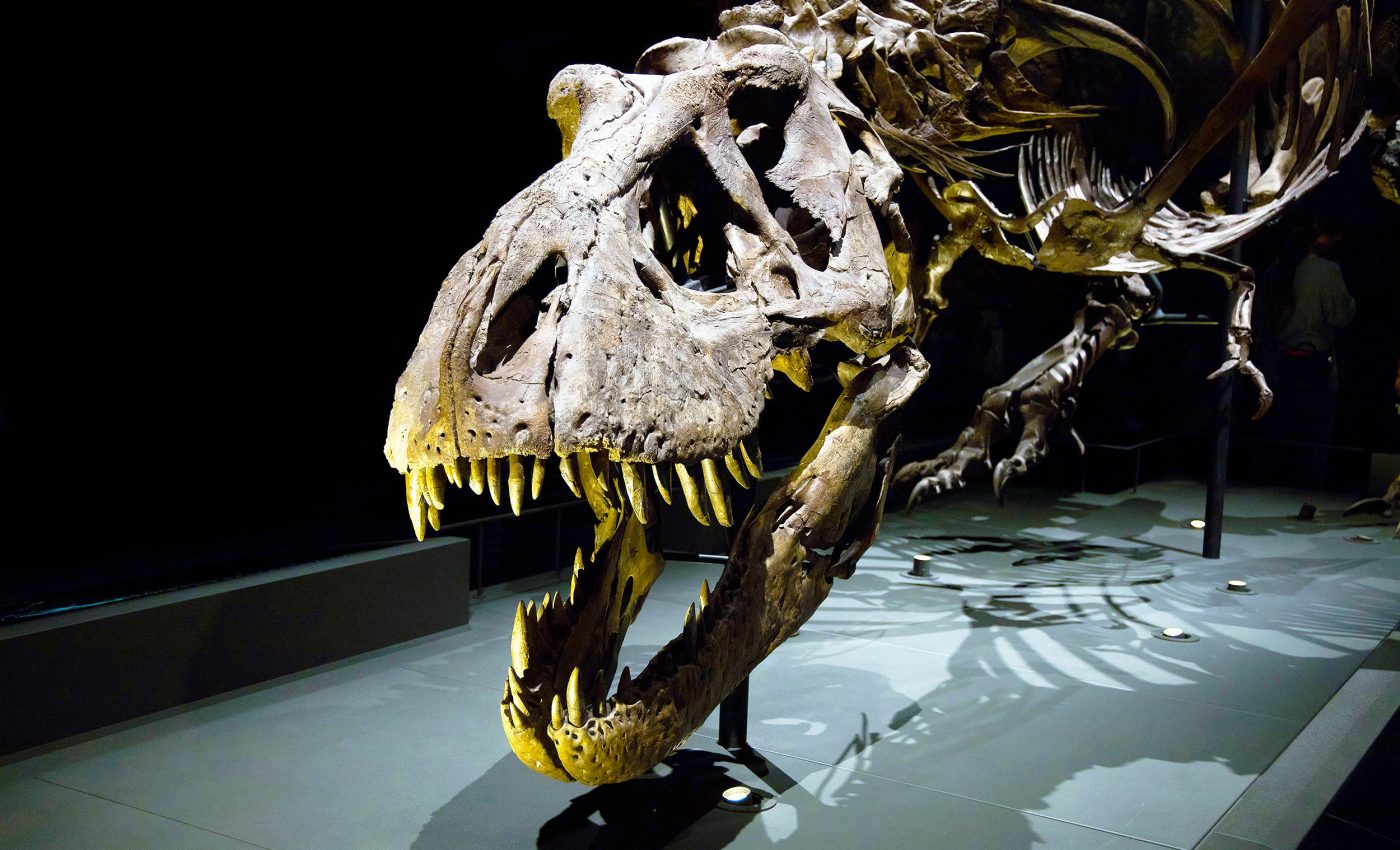
Was T. rex as smart as modern primates? Another study weighs in on the debate
The idea of a sharp‑witted Tyrannosaurus rex prowling through Cretaceous forests, planning ambushes with the cunning of a primate, has stirred public fascination for years.
A fresh debate erupted in 2023 when neuron counts – those microscopic processors in every brain – were promoted as the new yardstick for dinosaur intelligence.
Could tallying fossilized brain cells really tell us whether T. rex was closer to a crocodile or a clever baboon?
That question matters because neurons do more than fire signals; they set the stage for learning, memory, and even social complexity.
If a seven‑ton predator had primate‑level neuron numbers, our picture of dinosaur life would need a radical rewrite. As it turns out, the story is more complicated – and far more intriguing – than a single metric suggests.
T. rex brain power claim stirs debate
The spark came from neuroscientist Suzana Herculano‑Houzel of Vanderbilt University. In a 2023 Journal of Comparative Neurology paper, she proposed that by measuring fossil skull cavities and comparing them with living birds and reptiles, researchers could estimate dinosaur neuron counts.
Her calculations suggested that large theropods might boast totals on a par with monkeys, hinting at problem‑solving abilities, tool use, and cultural behaviors.
Popular media embraced the possibility of a “smart” tyrant lizard. Yet many specialists felt the hype skipped a few steps.
Paleoneurologists quickly noted that reptile brains fill only part of the cranial cavity, leaving cerebrospinal fluid to occupy the rest. Misreading that gap, they warned, inflates neuron estimates and, by extension, perceived intelligence.
Examining T. rex fossil brains
To test the claim, an international coalition of paleontologists, neuroanatomists, and cognitive psychologists re‑analyzed the data.
University of Alberta research associate Cristian Gutierrez‑Ibanez helped steer the effort. “There were a lot of people who thought the record needed to be set straight,” he explained.
“Particularly because it did make it into the press. You end up with this popular idea that T. rex was super smart and could use tools and have culture and you go, ‘Whoa!’”
Instead of eight separate rebuttals, the group pooled expertise. “We said there is no point in eight different things being written to say this is wrong. Why don’t we just put them all together?”
Their review, published in The Anatomical Record, swapped rough cavity volumes for high‑resolution CT scans of fossil braincases.
The new approach pulled neuron counts sharply downward, placing T. rex in a cognitive bracket closer to today’s large reptiles.
Why neuron counts aren’t crystal balls
Counting cells may look objective, but brains are more than piles of neurons. Connection patterns, circuit density, and metabolic rates all influence what an animal can do with those cells.
Alligator dissections illustrate the pitfalls.
“The first time I dissected an alligator brain, I took the top of the skull off and I went, ‘Where is the brain?’” recalls University of Alberta professor Doug Wylie.
Plenty of space sits empty inside reptile skulls, so cavity volume exaggerates brain tissue size.
Body mass muddies the water, too. “We don’t know why it’s true, but it is true. A larger animal needs more neurons.”
An adult male baboon tips the scale at roughly 30 to 90 lb, while a mature T. rex weighs around 14,000 lb. Many of its neurons merely kept those massive muscles, eyes, and sensory organs running.
With so much neural real estate devoted to basic physiology, little would remain for the advanced cognition seen in primates.
Brains, bodies, and T. rex math
Herculano‑Houzel had argued that high neuron counts implied warm‑blooded metabolisms in predatory dinosaurs. The rebuttal team disagrees.
Reptile brains pack neurons more loosely than bird or mammal brains, so raw totals alone can’t reveal metabolic style. “She’s focused on the neuron number, and they are too high anyway,” Wylie says.
Recent bone histology supports a middle‑ground view: many dinosaurs likely maintained body temperatures through a blend of behavioral basking and elevated internal heat production, rather than strict cold‑bloodedness or full mammalian endothermy. That nuance highlights why single‑factor models fall short.
What was T. rex like?
Gutierrez‑Ibanez and colleagues suggest looking at trackways, tooth wear, growth rings, and isotope chemistry to piece together behavior.
Evidence points to a sensorily acute predator with good vision, a powerful sense of smell, and the ability to coordinate pack‑style hunting now and then – but not the foresight to fashion tools or pass down cultural traditions.
“We are not dissing T. rex,” Gutierrez‑Ibanez says. “We are just saying that claiming T. rex had the intelligence of a baboon and culture might be taking it too far.”
Crocodiles provide a sober benchmark. They solve simple problems, show limited parental care, and learn from routine, yet they don’t build societies or share knowledge across generations.
A Cretaceous apex hunter operating at that level would still have been formidable without needing a primate‑grade intellect.
Where do we go from here?
Neuron counting remains a valuable technique, especially when paired with modern imaging and rigorous scaling laws. But brains never work in isolation; they evolve alongside bodies, behaviors, and environments.
The next wave of research will likely blend biomechanics, climate modeling, and even ancient DNA proteins to refine dinosaur life histories.
T. rex may not have been a reptilian Einstein, yet it ruled Late Cretaceous ecosystems for nearly two million years – a success record most species never achieve.
Sorting out how it did so requires many lines of evidence, and that scientific detective work is just getting started.
The full study was published in the journal The Anatomical Record.
—–
Like what you read? Subscribe to our newsletter for engaging articles, exclusive content, and the latest updates.
Check us out on EarthSnap, a free app brought to you by Eric Ralls and Earth.com.
—–













